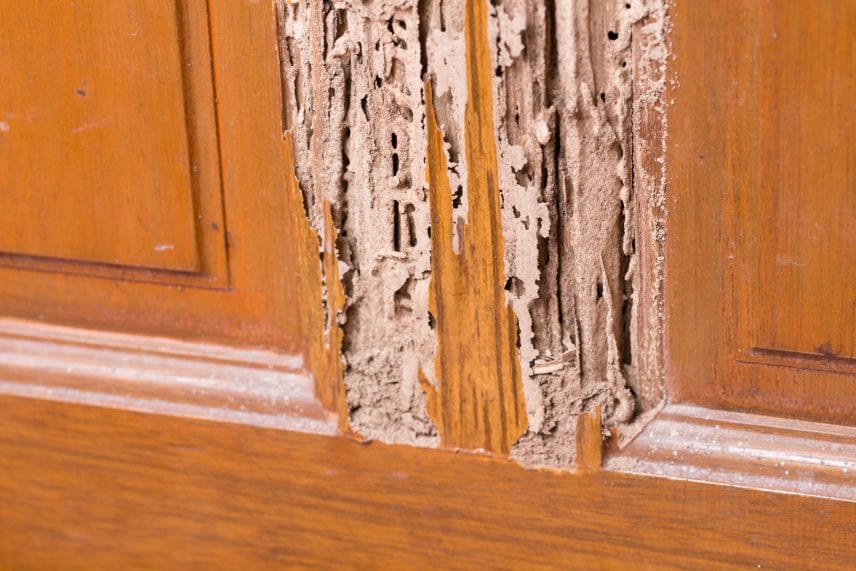Every year termites do tens of billions of dollars of damage to homes. They can go unnoticed for years, causing hidden issues in the structure of your home. Because they eat their way through wood, an untreated termite infestation can make homes unsafe. Even if they are caught sooner, the damage can be costly to repair.
As a result, it’s important to recognize signs of termites in your home so that you can address the issue quickly. Read on to learn the early signs of a termite infestation and what you can do if you suspect termites in your home.
Mud Tubes
One of the first signs of termites are mud tubes. Mature termite workers hate light, so they avoid it as much as possible. As a result, they create mud tunnel systems so they can travel around without exposing themselves to the light.
Mud tubes are tunnels that termites build from dirt and saliva. Termites use them to travel from the ground to the wood in walls and other structures.
Mud tubes are generally pretty small, so they can be hard to spot. They are often about the size of a pencil.
They also blend in since they are made from dirt around your home. They may look like ordinary lines of dirt, but if the dirt forms a pattern you may have termites.
Mud tubes are typically found in dark, damp locations, which also makes them difficult to find. If you suspect you may have termites, you may want to search hidden areas of your home. You may find mud tubes in the crawlspace or under the deck.
Winged Termite Swarms
Before termites mature, they have white wings. Seeing a few winged termites is an early sign. Once you see huge swarms of them, there is likely already an infestation nearby that is at least 3 years old.
A termite swarmer’s purpose is to fly around and establish new colonies. A termite infestation starts with just a few swarmers building a nest. Once you start seeing swarms of them, you likely already have an infestation on your hands and need to do damage control
You can recognize a termite swarmer by its black body with long white wings that are rounded at the tips. They are tiny, but recognizable by their distinct white wings.
Piles of Broken Wings
Before they mature, termites swarmers have wings so that they can create a new colony. Once they have found a new place to nest, they no longer need their wings, so they fall off.
If you see piles of discarded white wings, it is likely a sign of a termite infestation.
Termite Droppings
Termites live inside wood, and they keep their homes clean by eating their way through tunnels. They will then excrement the wood and push it out of small holes in the opening of their burrow.
You may discover a termite infestation from the droppings. They are very small, often just a millimeter long. The droppings can also look like sawdust or wood shavings.
Home Damage
The worst part of a termite infestation is the damage they cause to your home. Wood damage is a common symptom of termite damage. Termites eat the wood from the inside out, so if the wood in your home is hollow or you notice holes in it, it may indicate that you have a problem.
You may also notice that the paint in your walls appears to be bubbling out. It may look like water damage, but it could also be a sign that you have a termite infestation.
You could also discover a termite infestation in your yard, such as in a nearby tree. If you do, it is important not to dismiss this: the tree could become so damaged that it falls on your home. Or the termites could find a way inside your home, causing damage.
Other signs of home damage that may have been caused by termites include:
- Discolored or warping drywall
- Peeling paint on walls or ceilings
- Squeaky floorboards or loose floor tiles
- Hollow sounds when knocking on wood
How to Deal With a Termite Infestation
If you discover that you may have termites in your home, you should contact a pest control professional immediately. DIY termite extermination efforts are ineffective, and only professionals have the tools and knowledge to fully deal with the issue.
Professional pest control technicians use several different methods to deal with termites.
They may focus on prevention measures by creating a trench to prevent future termite damage. Since termites travel through the soil, they can dig a trench, treat the soil with termiticide, and then replace the soil. This will serve as a barrier to kill any termites that attempt to enter your home.
When dealing with existing colonies, the pest control company may use poisoned bait. However, it can take several months for the entire colony is eliminated using this method.
A quicker option is using various wood treatments to kill off existing infestations. This, combined with other prevention measures, should help get the infestation under control.
Get Help With Your Termite Infestation
An untreated termite infestation can cause thousands of dollars of damage to your home. There are many warning signs that you may have a termite infestation. If you suspect your home has a termite infestation, you should contact a pest control professional immediately.
At Pointe Pest Control, we offer residential termite control options to deal with unwanted house guests. Contact us today to get your termite issue under control quickly!


